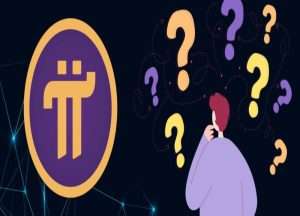Ripple’s XRP: What Is It? How Do It Work? – Beginner’s Guide
Public attention has been focused on cryptocurrencies, particularly Bitcoin, for some years. Bitcoin, however, is only one type of cryptocurrency. Many various types of digital currencies exist, each created for a specific purpose, from tipping your favorite YouTubers to paying your cell phone bill.
The XRP cryptocurrency from Ripple is notorious for its complexity. Different versions of XRP have existed since its introduction in 2012.
Ripple: What Is It?
Ripple is not a true cryptocurrency. XRP Token is the firm that created the XRP token. The business Ripple Labs Inc. calls itself provides “payment solutions.” Today, its primary goals are to develop a digital currency issued by a central bank that satisfies the stringent security requirements of central banks and to make it easier for people to make international payments using cryptocurrencies and to access cryptocurrency liquidity.
Ripple is in charge of the financial network RippleNet. Banks and other payment processors that have committed to using Ripple’s blockchain network for cross-border transactions are part of that network.
The XRP digital currency is used to make transactions on the XRP Ledger, which Ripple also controls.
XRP: What Is It?
It is intended that XRP be used as a global payment and trade medium. At the time of its inception, Ripple’s international payment system was powered by XRP. Since then, Ripple has upgraded this so that additional currencies can be used on the network in addition to XRP.
Speed of XRP Transactions
The speed of XRP transactions has always been a major selling point. In contrast to Bitcoin, which might take several minutes or more to execute a transaction, XRP transactions are finalized in seconds. Because unlike Bitcoin and other cryptocurrencies, XRP does not use the “proof of work” mechanism to verify transactions, it is less secure.
Infrastructure
Furthermore, XRP relies on a centralized network to function. In order to confirm transactions, XRP relies on a network of validators, making it less decentralized than other cryptocurrencies.
You need to be on Ripple’s Unique Node List of verified nodes before you may take XRP payments as a validator. There are already more than 150 XRP validators on the network, with over 35 of them included on the Unique Node List. Seven are under Ripple’s control.
Every three to five seconds, this decentralized network of nodes verifies all pending XRP transactions. The XRP Ledger is then updated and made public. This is what Ripple calls their Consensus Algorithm for the Ripple Protocol.
Ripple has always touted XRP’s lightning-fast transactions as a selling point for the cryptocurrency, saying that they will help create a more streamlined system for making international payments. Traditional international exchanges can cost a lot of time and money. Ripple claims that using XRP saves significant time and money while eliminating unnecessary bureaucratic hassles.
What Is XRP Used For?
For XRP, there are currently two main use cases.
- Low commission currency exchange: There are numerous instances where it is necessary to convert a currency into an intermediary currency first because it cannot be traded directly for another. That currency is often the US dollar. The same function of an intermediary currency can be performed with XRP, but at a lower cost per transaction.
- International payments: Ripple has long marketed the quick transactions of its XRP cryptocurrency as a substitute for traditional wire transfers, which can take days and have expensive fees.
Ripple’s payment network, RippleNet, allows users to create and distribute their own digital currencies for quick, low-cost transactions.
The XRP Ledger website states that use case proposals for NFT issuance, smart contract capabilities, and federated sidechains, which function as their own blockchains on the main network, are currently being developed.
What Distinguishes XRP From Bitcoin?
When compared to Bitcoin, XRP has a few key distinctions.
Mining of new Bitcoins occurs continuously, but the total number of Bitcoins that can ever exist is capped at 21,000,000. However, there are only 50 billion XRP coins in circulation out of a total of 100 billion.
While all XRP was created at the time of its release, and none will be created again, Bitcoin’s supply is substantially smaller, making it more valuable. As of September 25th, one Bitcoin is now valued $18,812.82, and one XRP is now worth only $0.4937.
Similar to Bitcoin, XRP is a centralized cryptocurrency. As the latter requires evidence of labor for each transaction, the former can be centrally managed for faster processing times. As an alternative, it relies on a decentralized network of nodes to verify each transaction. However, Ripple claims it has measures in place to protect its digital money, so there is still some danger involved.
Conclusion
It’s exciting to see XRP gaining traction in the banking sector as a means of making international payments and exchanging currencies. It has the potential to provide a more efficient method of settling international payments than Bitcoin, which can take an hour or more each transaction. However, the outcome of the SEC’s ongoing case could determine the long-term viability of Ripple and XRP.










